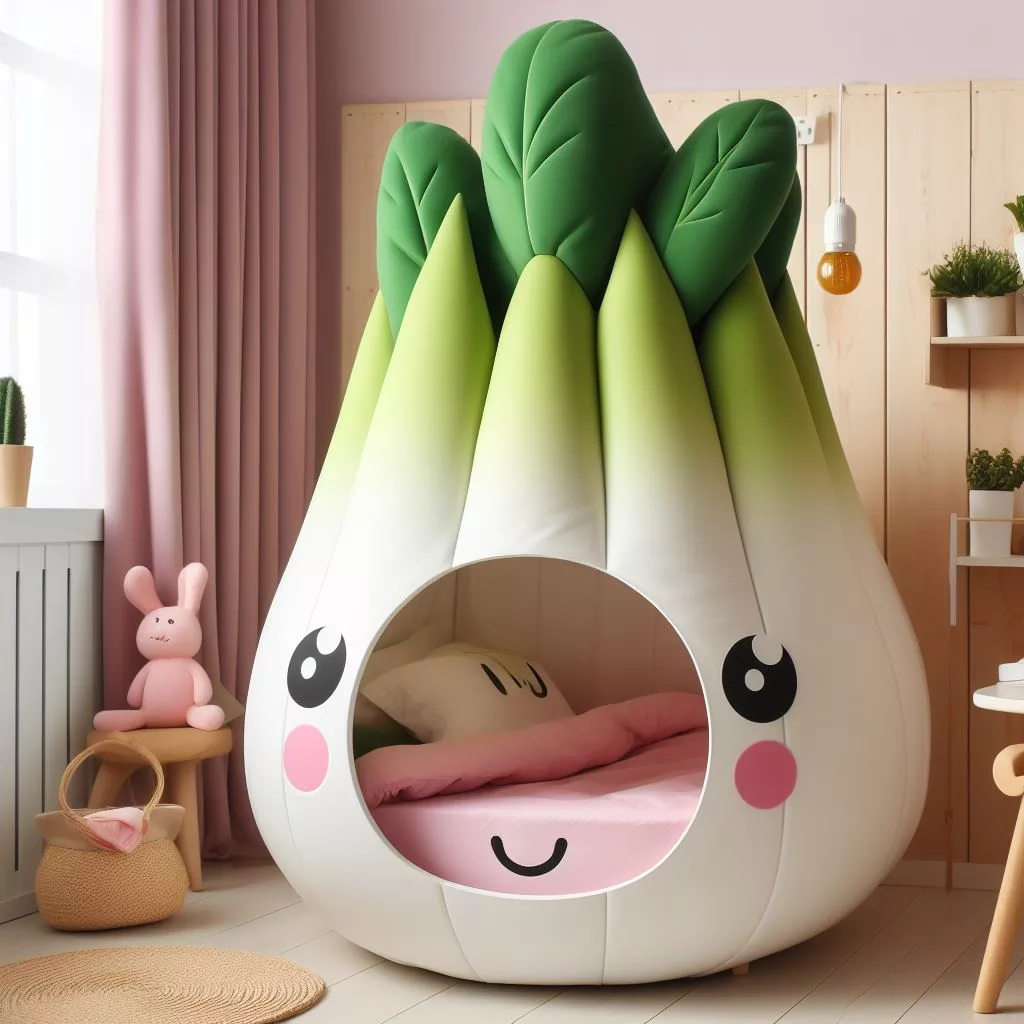Children’s play spaces are not just about fun and games; they’re also opportunities for learning and exploration. One innovative approach to creating engaging and educational play areas for kids is through vegetables-inspired dens.
These unique spaces not only encourage imaginative play but also foster an appreciation for nature and healthy eating. In this blog post, we’ll explore the benefits of vegetables-inspired dens and provide tips for creating one that will delight and inspire children.
Benefits of Vegetables-Inspired Dens
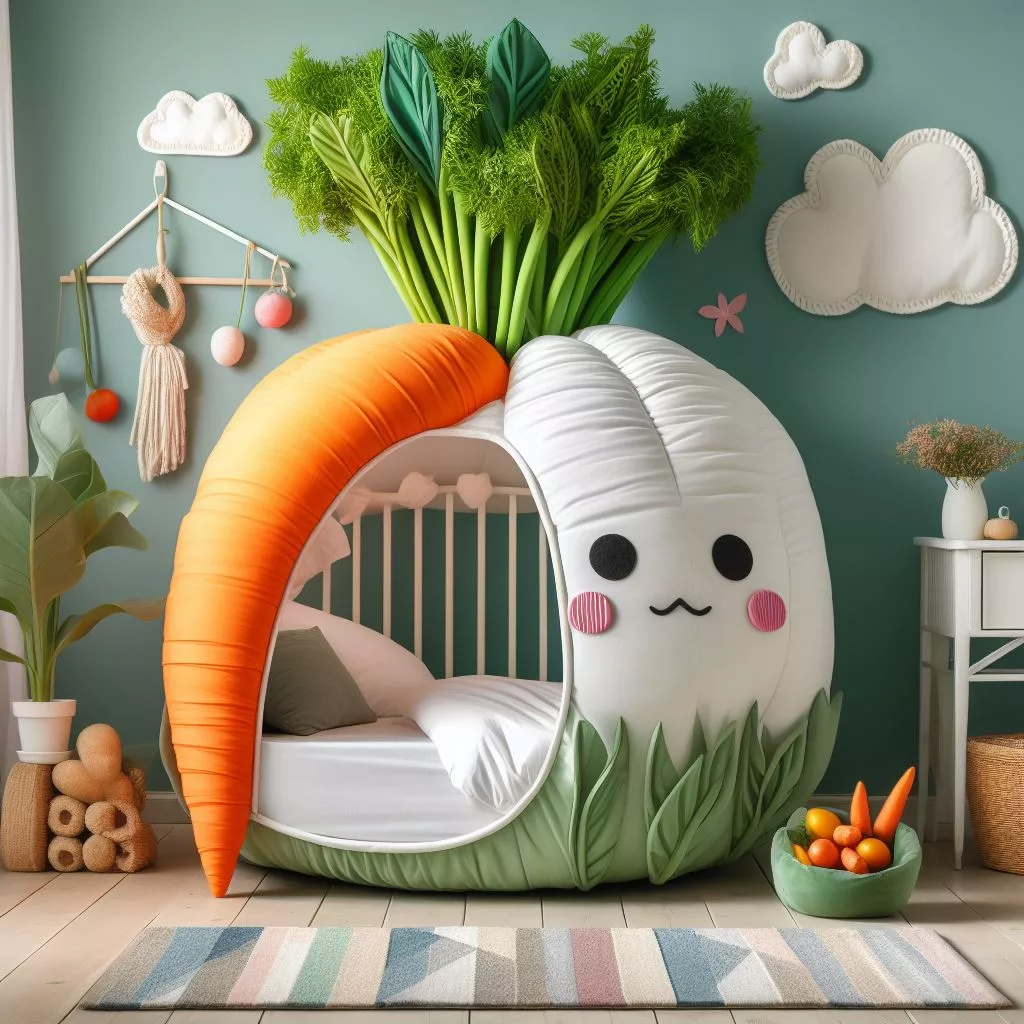
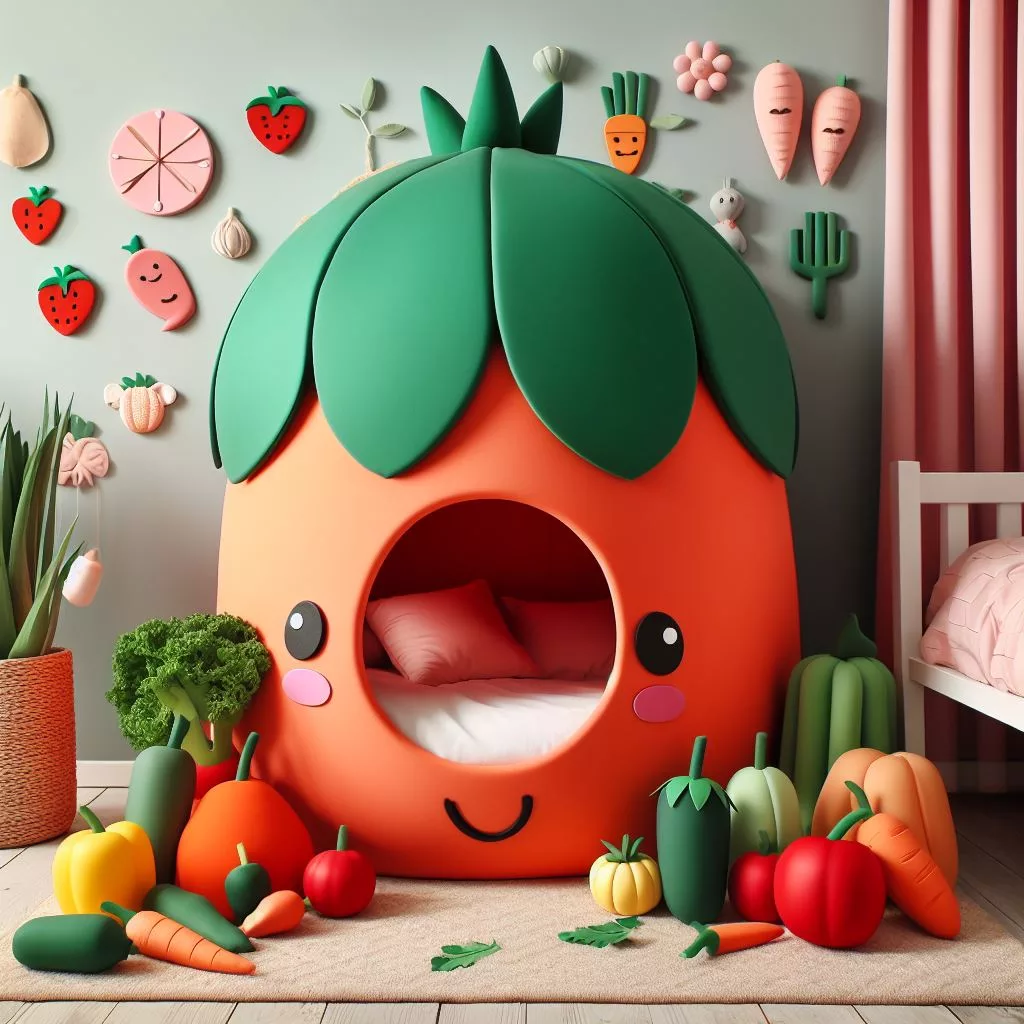
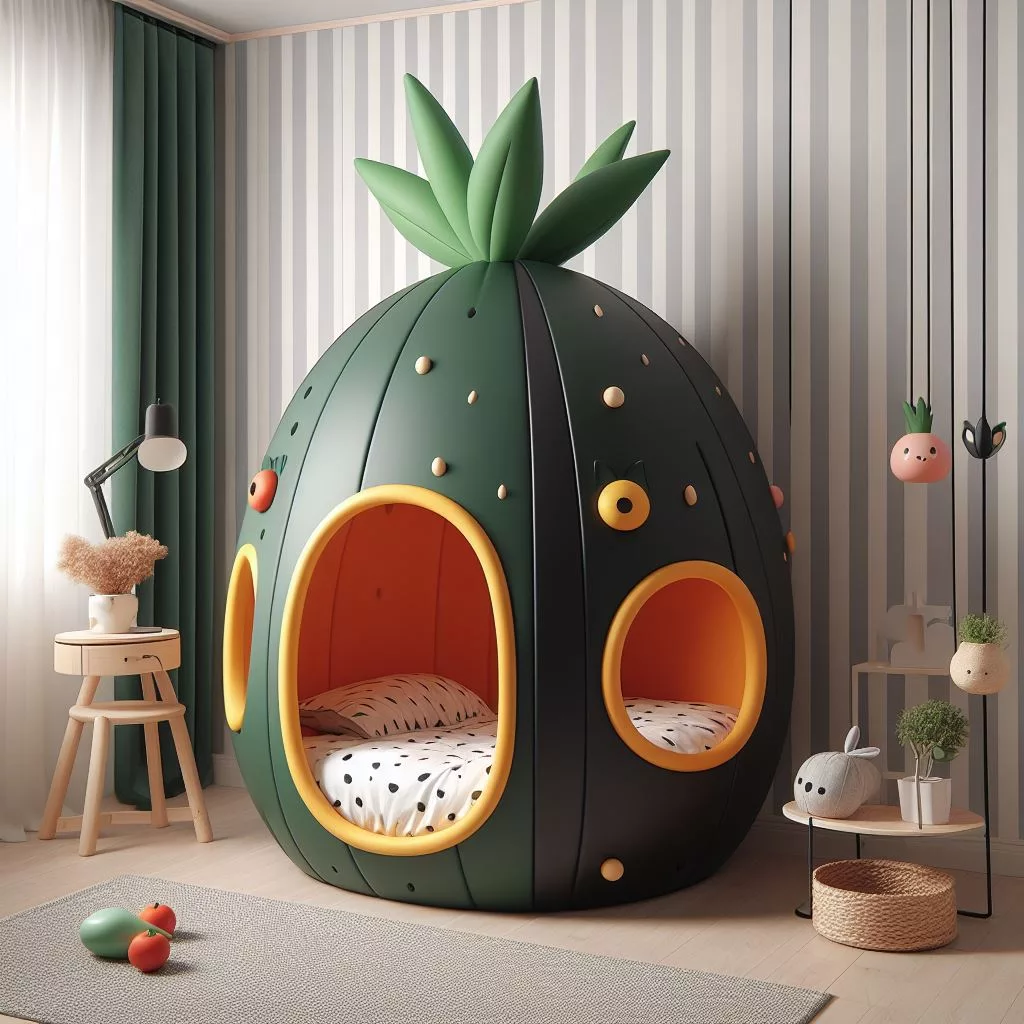
- Educational Value: Incorporating vegetables into play spaces provides an excellent opportunity for children to learn about different types of produce, their colors, shapes, and nutritional benefits. It can spark their curiosity about gardening and healthy eating habits from a young age.
- Imaginative Play: A vegetables-inspired den stimulates imaginative play, allowing children to pretend they’re exploring a lush garden or running their own farmer’s market stand. This type of play encourages creativity and problem-solving skills as children engage in role-playing scenarios.
- Connection to Nature: By surrounding children with images and representations of vegetables, you create a connection to the natural world. This connection can instill a sense of appreciation and stewardship for the environment as children learn about the origins of their food.
- Multi-Sensory Experience: Incorporating various textures, colors, and scents of vegetables into the play space provides a multi-sensory experience for children. It engages their senses and enhances their overall learning and play experience.
Creating a Vegetables-Inspired Den
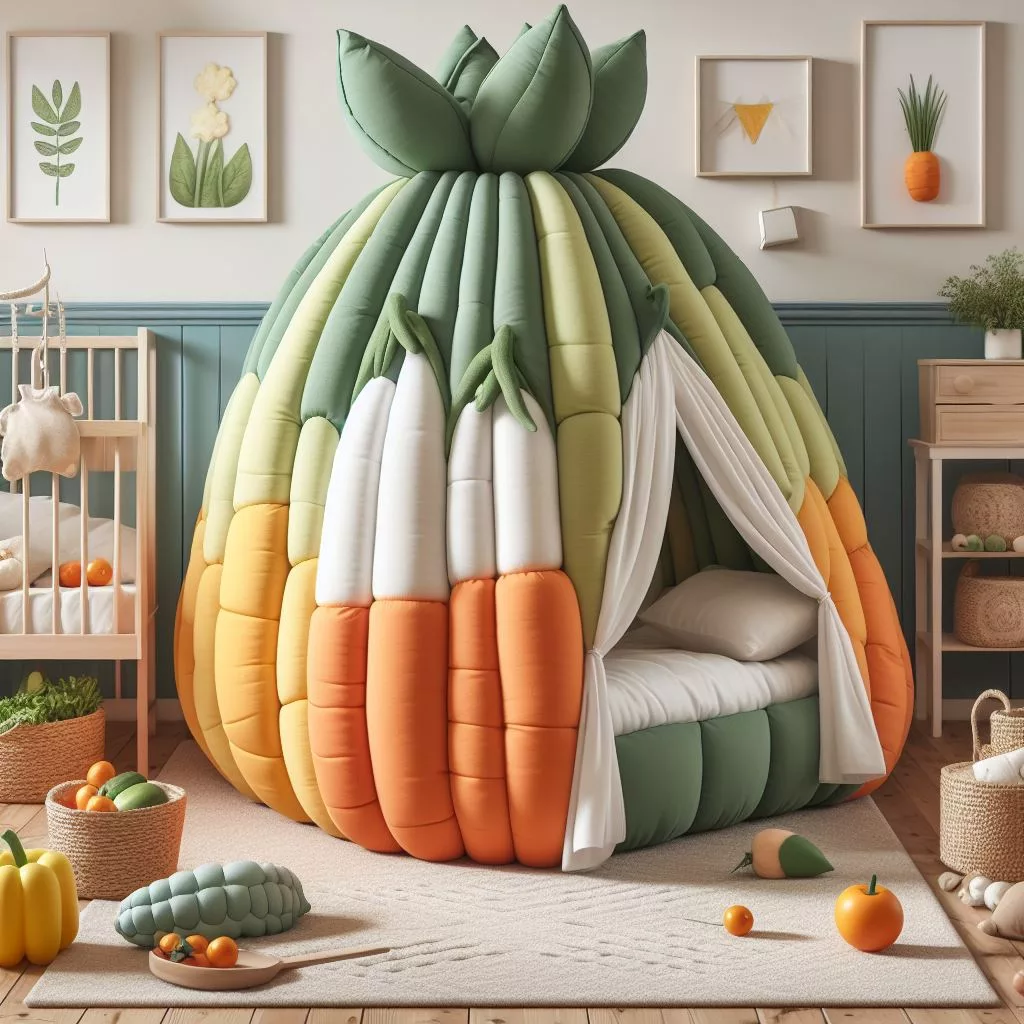
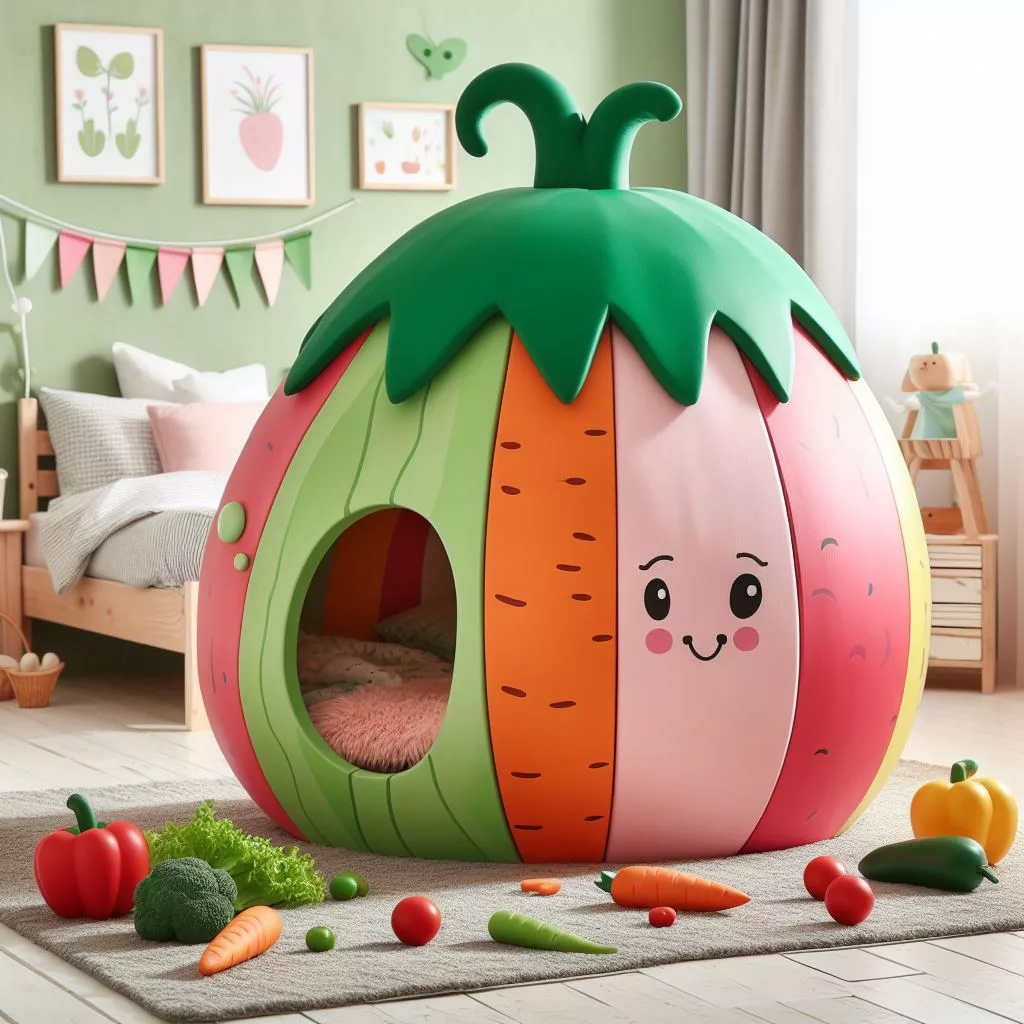
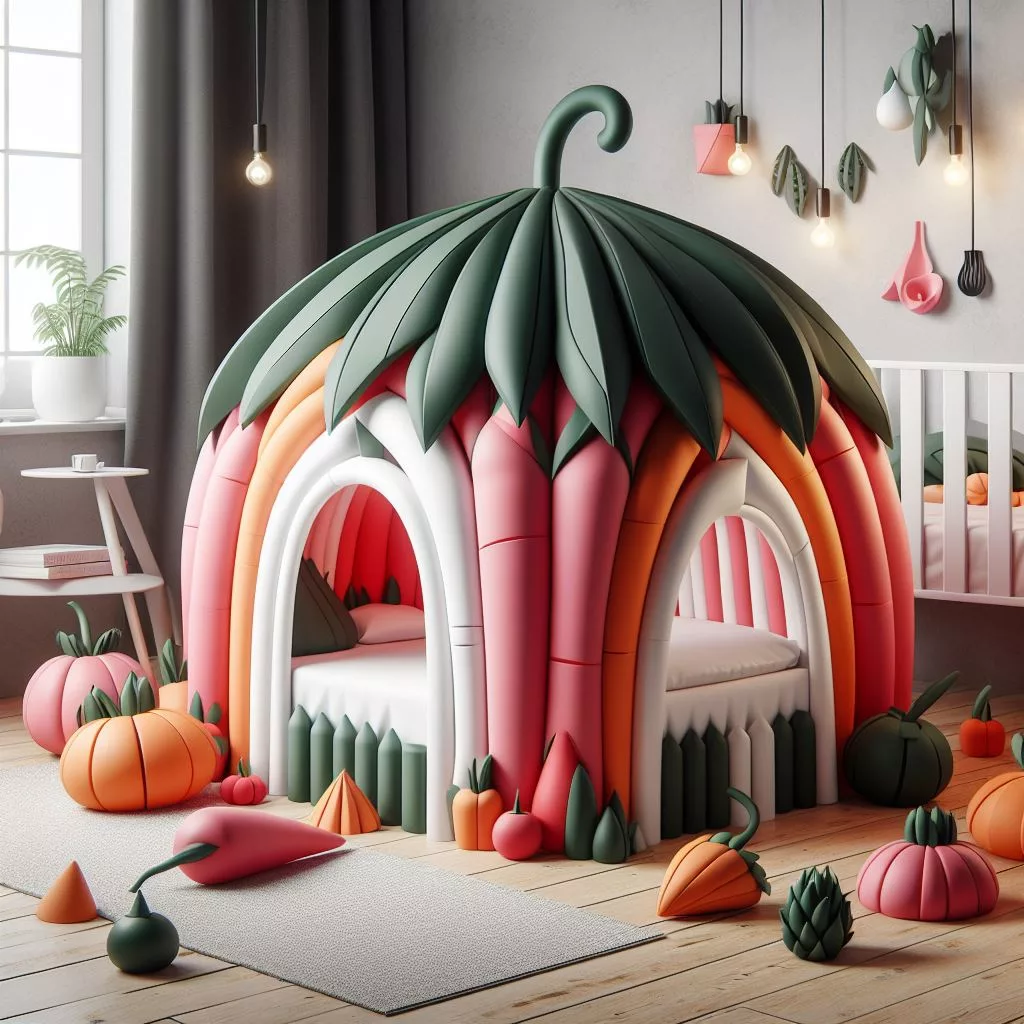
- Design and Decor:
- Choose vibrant colors reminiscent of different vegetables for the walls, furniture, and decorations.
- Incorporate vegetable-themed wall decals, posters, or murals to create an immersive environment.
- Use fabric or paper to create vegetable-shaped bunting or garlands to hang around the den.
- Interactive Elements:
- Include pretend play items such as toy vegetables, baskets, and gardening tools for children to use in their imaginative play.
- Set up a small play kitchen area with plastic or wooden fruits and vegetables for children to “cook” and “serve” to their friends.
- Create a sensory table filled with dried beans, corn kernels, or rice for children to explore and manipulate.
- Educational Resources:
- Display books about gardening, vegetables, and healthy eating within the den for children to read independently or with adults.
- Incorporate educational posters or flashcards that feature different vegetables and their nutritional benefits.
- Integrate learning activities such as matching games or puzzles that reinforce vegetable identification and vocabulary.
- Garden-Inspired Outdoor Space:
- If possible, extend the vegetables-inspired theme to an outdoor play area by creating a small garden space where children can plant and tend to real vegetables.
- Provide child-sized gardening tools and encourage children to participate in planting, watering, and harvesting vegetables.
Conclusion
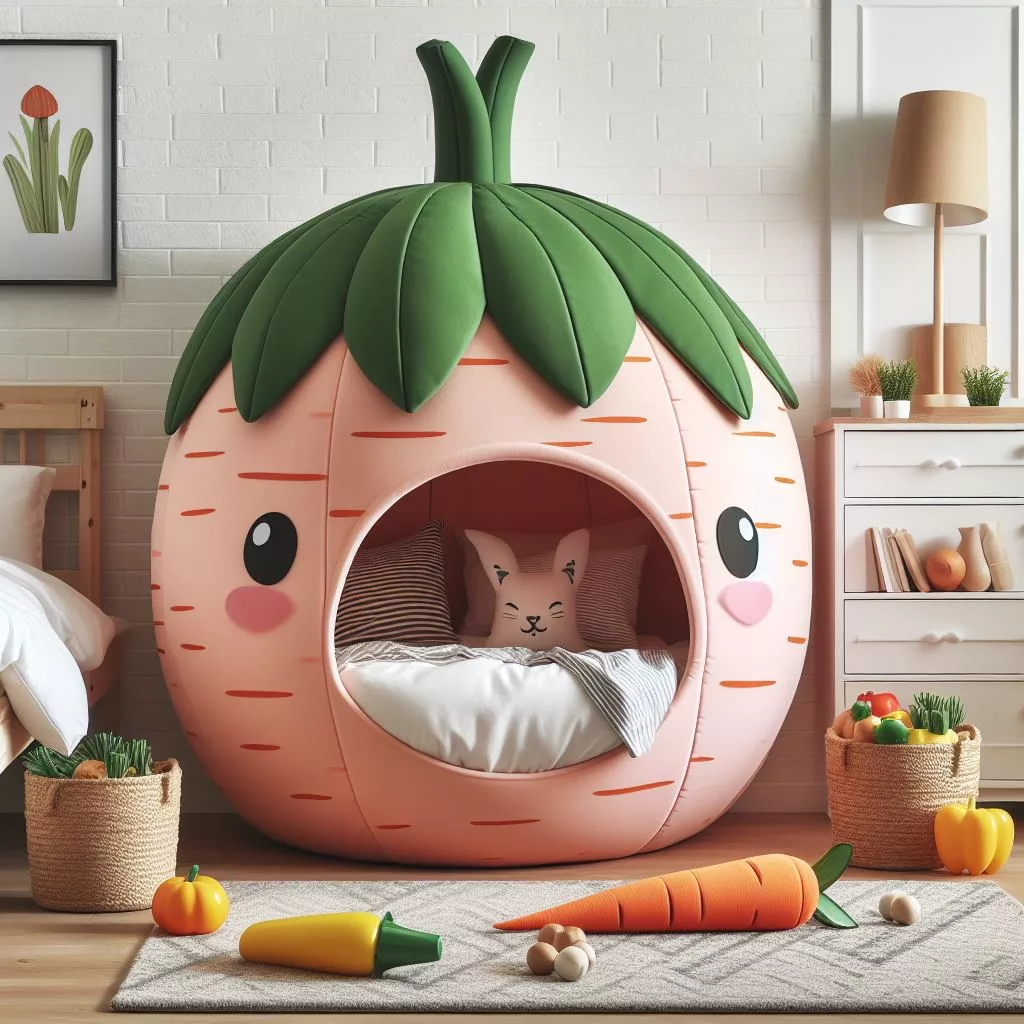
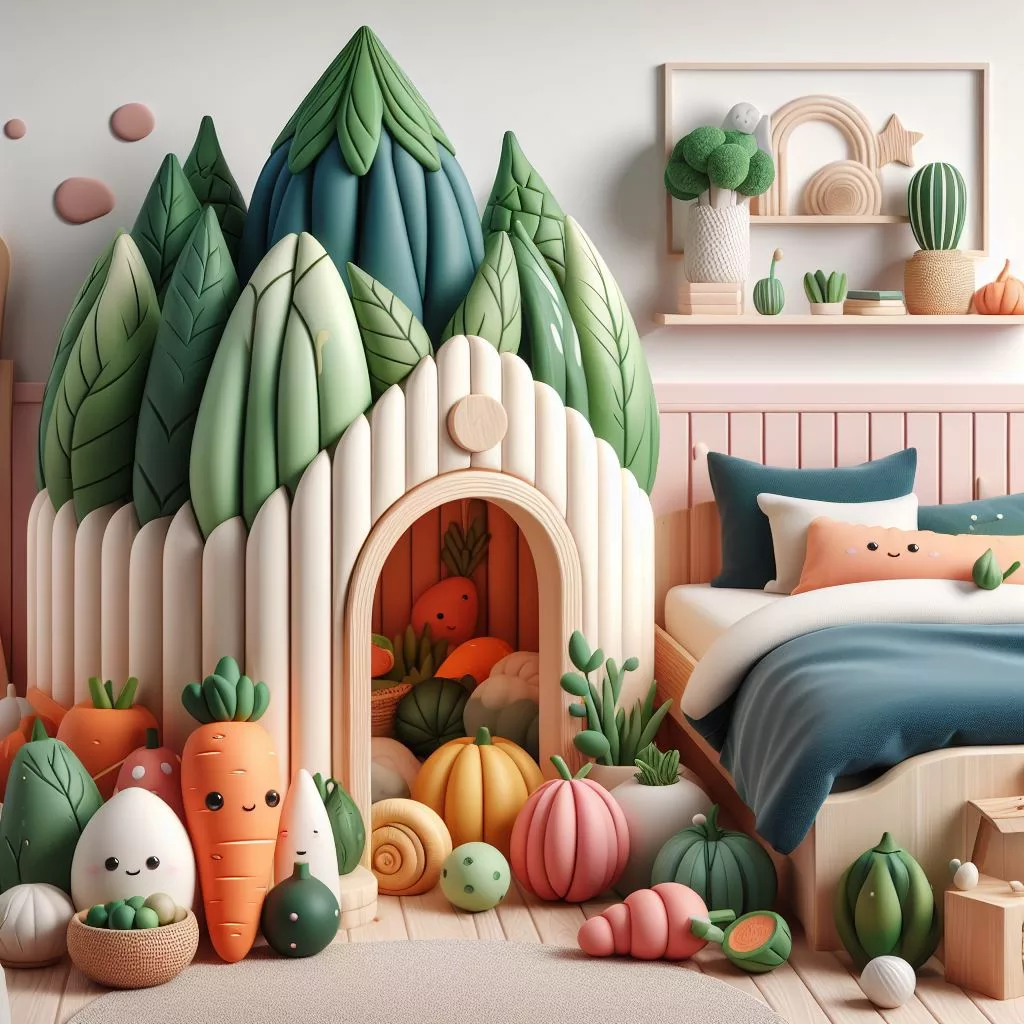
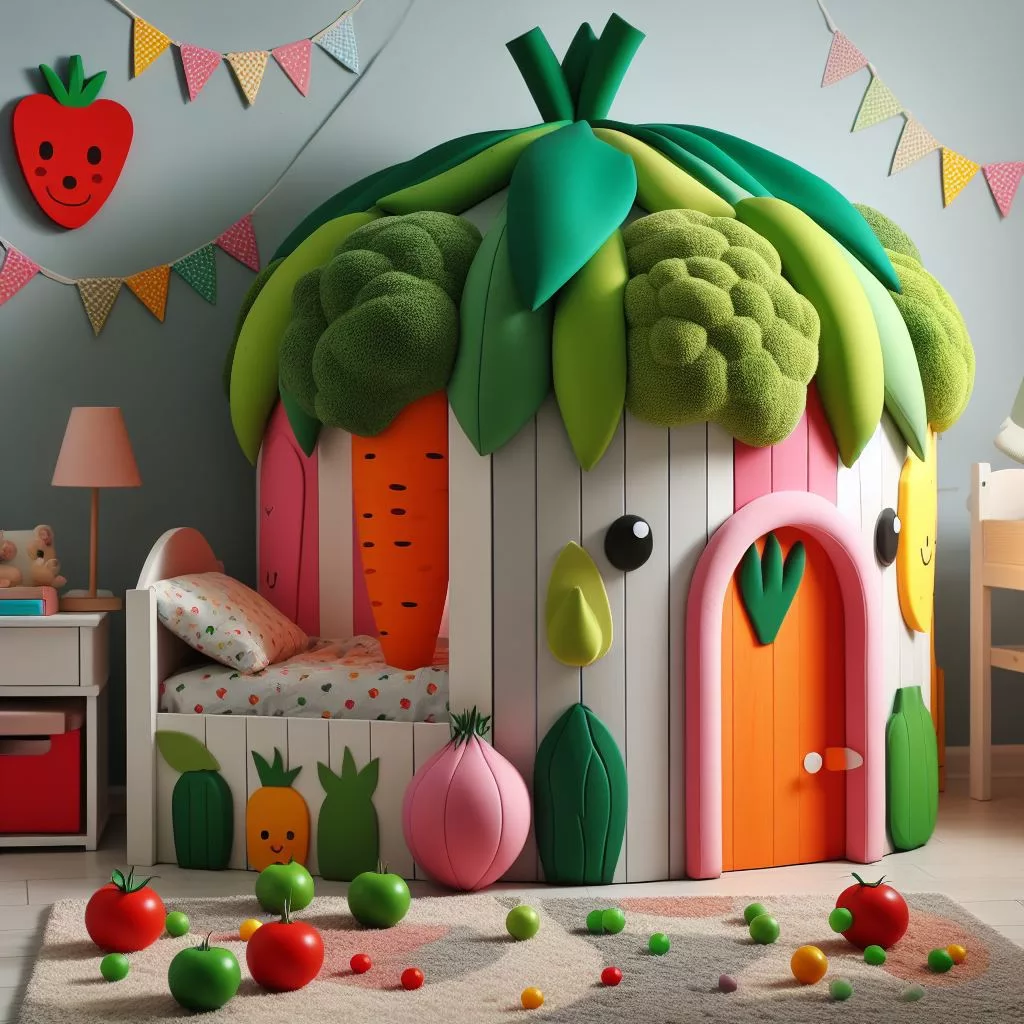
Vegetables-inspired dens offer a unique and enriching play experience for children, combining the benefits of imaginative play, education, and connection to nature. By creating a vibrant and interactive space filled with vegetable-themed decor and activities, you can inspire children to explore the wonders of gardening and healthy eating while having fun. Whether indoors or outdoors, a vegetables-inspired den is sure to captivate the hearts and minds of young learners, fostering a lifelong appreciation for nature and nutritious foods.

